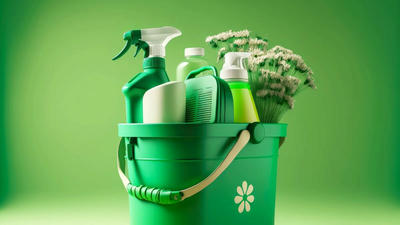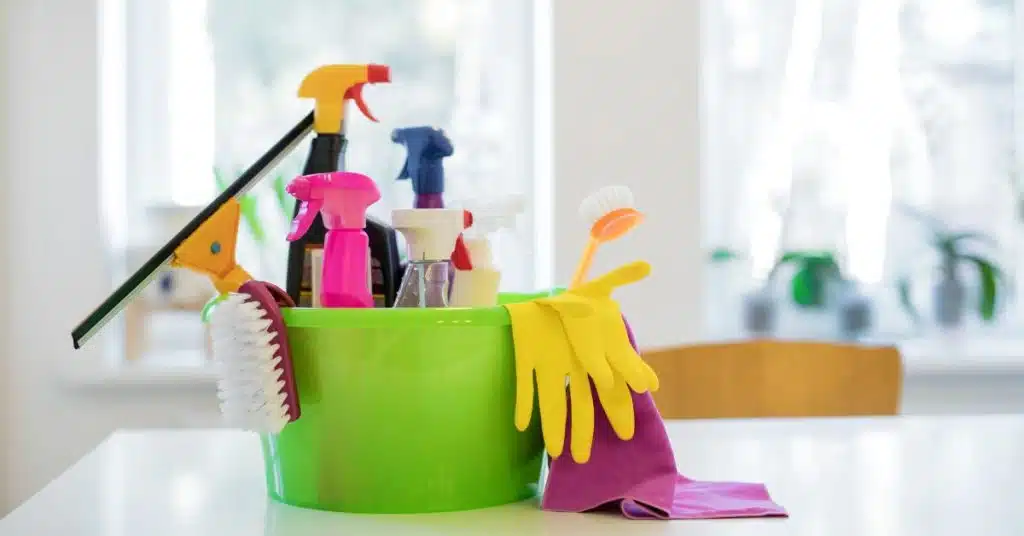Polishing 101: Restoring Shine to Your Furniture and Fixtures
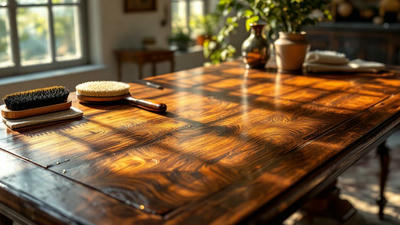
Every home deserves furniture and fixtures that shine and enhance the beauty of your living space. Over time, however, dust, grime, and daily wear and tear can diminish the luster of these items. Polishing is an essential part of home care that can restore that shine and prolong the life of your furniture and fixtures.
Understanding the Importance of Polishing
What is Polishing?
Polishing refers to the process of applying a substance—such as oil, wax, or a specialized cleaner—to a surface to improve its appearance and protect it from damage. The main goals of polishing include:
- Removing Dirt and Grime: Over time, surfaces gather dust, dirt, and oils that can dull their appearance. Polishing helps eliminate these residues.
- Restoring Shine: Polishing revives the natural sheen of materials, giving them a fresh and attractive appearance.
- Protecting Surfaces: Many polishing products create a protective barrier that guards against future stains, scratches, and damage.
Benefits of Regular Polishing
Regular polishing benefits your home in several ways:
- Enhances Aesthetic Appeal: Polished furniture and fixtures look more attractive, improving the overall appearance of your home.
- Increases Longevity: By protecting surfaces from wear and tear, polishing can extend the life of your furniture and fixtures, saving you money in the long run.
- Improves Hygiene: Polishing removes accumulated dust and allergens, helping maintain a healthier living environment.
- Boosts Value: Well-maintained furniture can enhance the value of your home, making it more appealing to potential buyers if you decide to sell.
Different Types of Furniture and Fixtures
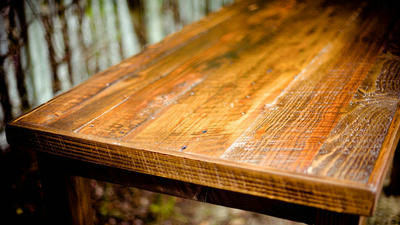
Wooden Furniture
Wooden furniture is a common feature in many homes. It adds warmth and character to spaces but can be susceptible to scratches, water marks, and fading. Understanding how to polish wood is essential for maintaining its beauty.
Metal Fixtures
Metal fixtures, such as doorknobs, light fixtures, and decorative pieces, can become tarnished and lose their shine over time. Different metals, such as brass, copper, and stainless steel, require specific care to restore their appearance.
Glass Surfaces
Glass tables, mirrors, and decorations can show fingerprints, streaks, and dust. Polishing glass surfaces not only improves their appearance but also enhances their clarity.
Leather Furniture
Leather brings elegance to any space but requires special care to prevent cracking and fading. Knowing how to properly polish and condition leather can keep it looking luxurious.
Stone Surfaces
Natural stone surfaces, such as marble and granite, can become dull over time. Polishing stone not only enhances its beauty but also adds a layer of protection.
Preparing for the Polishing Process
Before you begin polishing, it's essential to prepare your space and gather the necessary tools and materials.
Assessing the Condition of Your Furniture
Evaluate the current condition of the furniture or fixture you plan to polish. Look for any noticeable stains, scratches, or damage. Understanding the state of the item will help you select the appropriate products and techniques for polishing.
Cleaning Before Polishing
A crucial step before polishing is thoroughly cleaning the surface. Dust and dirt can create scratches during the polishing process if left on the surface. Here are some general cleaning tips:
- Dusting: Use a microfiber cloth to gently dust the item, removing surface dust and debris.
- Cleaning Solution: Depending on the material, you may need a specific cleaning solution. For wood, use a wood cleaner or a mixture of mild soap and water. For metal, choose a metal-safe cleaner.
- Wipe Dry: Use a soft cloth to dry the surface to prevent water spots and ensure an even polishing application.
Gathering the Right Tools and Products
Having the right tools and products on hand will make the polishing process smoother. Here is a list of items you may need:
- Polishing Cloths: Soft, lint-free cloths or microfiber towels are ideal for applying polish and buffing surfaces.
- Polishing Products: Depending on the material, you may need specific polishes, waxes, or oils.
- Sponges or Applicators: For larger surfaces, you may find it helpful to use a sponge or applicator pad.
- Protective Gear: Consider wearing gloves to protect your hands, especially when using chemicals.
Polishing Wooden Furniture
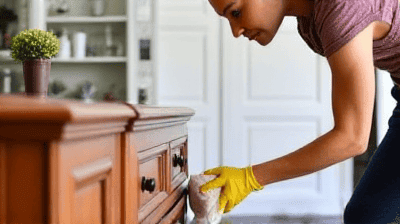
Wooden furniture can vary greatly in its finish, so it's important to identify the type of wood and finish before proceeding with polishing.
What You Need to Know About Wood Finishes
Wood finishes can be categorized into different types, each requiring specific care:
- Lacquer: A durable finish that dries quickly. Use a liquid wax or polish designed for lacquer.
- Shellac: A natural, traditional finish. Use a gentle cleaning solution and avoid harsh chemicals.
- Varnish: Provides a tough, protective layer. Use products specifically formulated for varnished wood.
Polishing Steps for Wooden Furniture
Choose the Right Polish: Select a polish appropriate for the wood finish you have. Options include beeswax, lemon oil, or commercial wood polish.
Apply the Polish: Dampen a clean cloth with the polish and apply it in the direction of the wood grain. Be sure to cover the entire surface evenly.
Let It Set: Allow the polish to penetrate for a few minutes, following the product instructions.
Buff the Surface: Use a separate clean, dry cloth to buff the surface, again working in the direction of the grain. This will help bring out the shine and remove any excess polish.
Inspect and Repeat: After buffing, inspect the furniture. If it needs more shine, repeat the application process until you achieve the desired look.
Tips for Maintaining Wooden Furniture
- Dust regularly to prevent buildup.
- Avoid placing wet items directly on wood surfaces.
- Use coasters to protect against stains from drinks.
Polishing Metal Fixtures
Metal fixtures can add elegance to your home, but they require special care to maintain their shine.
Identifying Your Metal Type
Different metals require specific polishing techniques:
- Brass: Tarnishes easily and can benefit from a brass polish or a homemade paste of baking soda and vinegar.
- Copper: Polished with products specifically designed for copper or a mixture of lemon juice and salt.
- Stainless Steel: Best treated with a dedicated stainless steel cleaner or a vinegar and water mix.
Polishing Steps for Metal Fixtures
Select the Appropriate Cleaner: Choose a metal polish that matches the type of metal you are working with.
Apply the Polish: Use a soft cloth or applicator to apply the polish evenly over the metal surface.
Buff the Surface: Once the polish has set for the recommended time, use a clean, dry cloth to buff the metal, restoring its shine.
Final Wipe: For stainless steel, consider wiping down with a mixture of equal parts vinegar and water to remove any streaks.
Tips for Maintaining Metal Fixtures
- Regularly wipe fixtures with a damp cloth to prevent buildup.
- Avoid abrasive cleaners that can scratch the surface.
Polishing Glass Surfaces
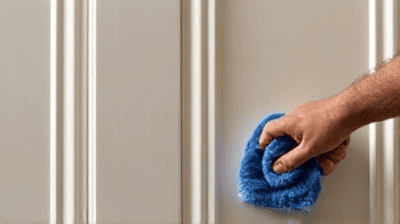
Glass surfaces, including tables and mirrors, are prone to fingerprints and dust. To maintain their clarity, polishing is essential.
Choosing the Right Glass Cleaner
For glass polishing, you can use commercial glass cleaners or create a homemade solution with equal parts vinegar and water.
Polishing Steps for Glass Surfaces
Clean the Surface: Begin by dusting the glass surface using a microfiber cloth.
Apply the Cleaner: Spray the glass cleaner generously on the surface or directly onto a clean cloth.
Wipe in Circular Motions: Use the cloth to wipe in circular motions, ensuring thorough coverage without streaks.
Buff the Surface: After cleaning, use a dry microfiber cloth to buff the glass for extra shine.
Tips for Maintaining Glass Surfaces
- Clean glass surfaces regularly to reduce the need for deep cleaning.
- Avoid ammonia-based cleaners that can damage coatings and cause streaking.
Polishing Leather Furniture
Leather adds sophistication to any space but requires special care to maintain its appearance and durability.
Understanding Different Types of Leather
- Aniline Leather: Soft and natural, it requires gentle cleaning and conditioning.
- Protected Leather: Usually coated with a protective layer; it can withstand more rigorous cleaning.
Polishing Steps for Leather Furniture
Clean the Surface: Use a damp cloth to remove dust and dirt, ensuring the leather is clean before applying any products.
Apply Leather Conditioner: A leather conditioner should be used instead of traditional polish. Apply a small amount to a soft cloth and work it into the leather using circular motions.
Allow to Absorb: Let the conditioner absorb into the leather for a few minutes before buffing.
Buff the Surface: Use a clean cloth to gently buff the leather surface, enhancing its shine.
Tips for Maintaining Leather Furniture
- Protect leather from direct sunlight to prevent fading.
- Keep it moisturized by conditioning periodically, roughly every six months.
Polishing Stone Surfaces
Natural stone surfaces, such as marble and granite, can dull over time due to wear and tear. Proper polishing restores their shine and luster.
Understanding Stone Finishes
Natural stones may have different finishes, including polished, honed, or textured. Understanding the finish helps determine the polishing technique needed.
Polishing Steps for Stone Surfaces
Clean the Surface: Begin by mopping or wiping the stone surface with a pH-neutral cleaner.
Choose a Stone Polish: Select a polish that is specifically designed for the type of stone you are cleaning. For instance, marble polish is different from granite polish.
Apply the Polish: A soft cloth or sponge should be used to apply the polish evenly across the stone surface.
Buff the Surface: After the polish has been allowed to sit for the recommended time, buff the surface using a clean, dry cloth until the desired shine is achieved.
Tips for Maintaining Stone Surfaces
- Seal natural stones to protect against stains and moisture.
- Clean spills immediately to prevent staining.
Common Mistakes to Avoid When Polishing
While polishing can significantly enhance the appearance of your furniture and fixtures, there are common mistakes that should be avoided to achieve the best results.
1. Not Testing Products First
Always test any new polishing product on a small, inconspicuous area before applying it widely. This will help you determine if the product is suitable for the surface and will not cause any damage.
2. Overusing Product
Using too much polish can lead to buildup, which can make surfaces look dull over time. Always follow the manufacturer's recommendations for product usage.
3. Neglecting to Clean First
Polishing over a dirty surface can cause scratches and may not yield the desired shine. Be sure to clean thoroughly before applying polish.
4. Ignoring Maintenance
Regular maintenance can prevent the need for extensive polishing. Create a cleaning routine that includes regular dusting and conditioning.
Maintaining Your Polished Furniture and Fixtures
Once you have polished your furniture and fixtures, maintaining that shine requires ongoing care. Here are some tips to help keep your items in top condition:
Regular Dusting
Dust surfaces regularly to prevent dirt buildup. Use a microfiber cloth to trap dust without scratching surfaces.
Immediate Cleanups
Deal with spills and stains immediately. Most surfaces are easier to clean when addressed right away.
Controlled Environment
Where possible, control the environment of your home to protect furniture and fixtures. Avoid excessive sunlight and humidity, which can cause damage over time.
Seasonal Cleaning
Incorporate polishing into your seasonal cleaning routine. Whether it’s quarterly or biannually, a designated time to polish ensures that furniture and fixtures stay looking their best.
Conclusion
Polishing is a vital aspect of home care that helps restore shine and protect your investments in furniture and fixtures. By understanding the different materials in your home and how to care for them, you can maintain a polished, beautiful living space.
Throughout this guide, we have explored various techniques for polishing different surfaces, from wooden furniture to metal fixtures, glass, leather, and stone. By following best practices and avoiding common mistakes, you can achieve impressive results that enhance the aesthetic appeal and longevity of your belongings.
Investing time and effort into proper polishing will not only improve the look of your home but also contribute to a healthier living environment. Start polishing today and enjoy the beauty of your refurbished furniture and fixtures for years to come.

